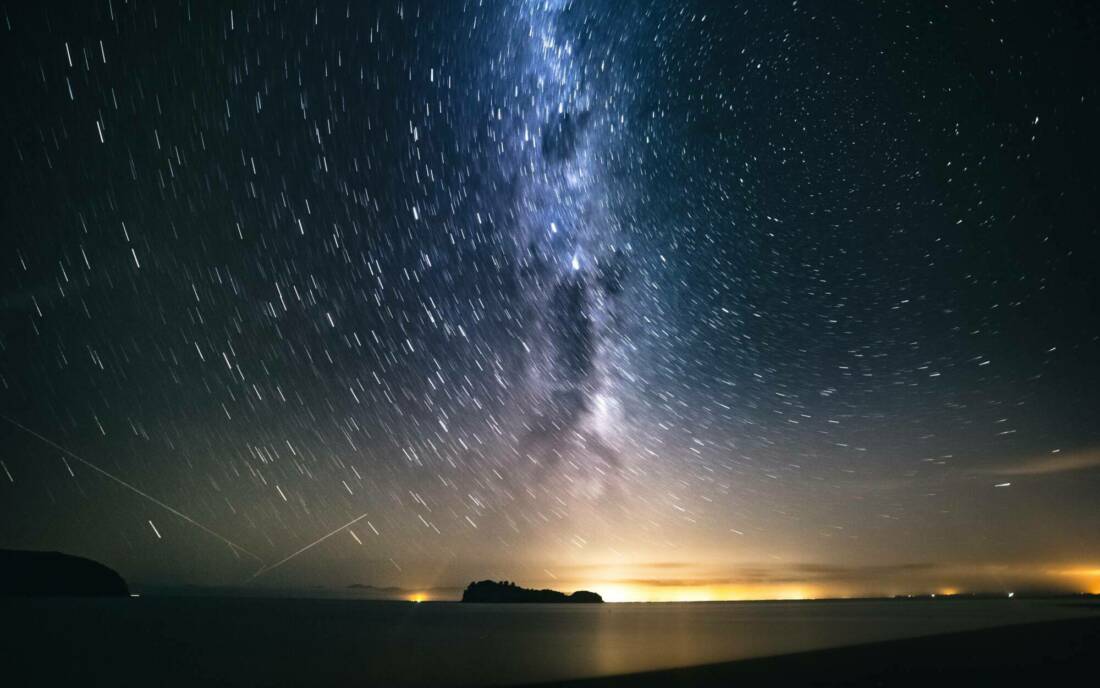Reflecting on Matariki and Puanga
Matariki plays a significant role in Māori culture in signifying the start of the New Year and for plantings to begin. Here UNESCO Aotearoa Youth Leader Blair Kapa-Peters and Culture Commissioner Dr Dan Hikuroa share their experience and knowledge of Matariki.
Blair Kapa-Peters
For some, the Māori Calendar begins with the reappearance of Matariki, or in Hokianga,Te Puangarua constellation. Matariki to me is more than the seven stars. Matariki signifies the time for harvest, for planning and preparing for the year to come. Maramataka (Maori Lunar Calendar) and Matariki were a big part of our rural community in the Far North, knowing when to sow Kumara and Peruperu potatoes, when the fishing was good and when it would be possibly fatal; you could tell, as particular days of Matariki had their own names eg: Tangaroa-a-mua (Day 24) was good for fishing or Hotu (Day 12) a horrible day for fishing – the ocean is rough (people have gone fishing on Hotu and have been swept off our local fishing rock and drowned, so people always say, “check the maramataka”). Matariki for us signified the start of the cultivation season, whereas, the day you stand on your maunga and see Puanga first appear would be the start of the New Year.

Dr Dan Hikuroa
I grew up in Auckland disconnected from my marae, from ancestral knowledge. I first recall hearing about Matariki in the early 2000s, right as I was really beginning to engage with Mātauranga (Māori knowledge, culture values and worldview) through working with Māori communities. What I remember is Matariki being described as ‘the Māori New Year’, that it fell on ‘one day’, that it referred to the group of stars known elsewhere as Subaru, Pleiades, the Seven Sisters, and that similarly there were seven stars in Matariki. In subsequent years I then learnt that often there was a dawn ceremony with karakia and that flying kites and having a kai were part of the ceremony. I also recall Auckland City really getting into it – organising many Matariki events.
Fast-forward to today, Matariki which has between seven and nine stars, is not the only New Year marker, with Puanga/Puaka/Puangarua/ (Rigel) also recognised by some groups, and that it is better referred to as the ‘Matariki/Puanga’ day or days, and not just a single ‘day’, and that the days varied across the country.
What appears to be consistent is that whatever stellar signal was used, its rise occurred after the winter solstice. What is also apparent is that there is a huge interest in Matariki/Puanga, and that due to the variation between tribal groups there is also a lot of confusion in wider New Zealand society.
In the past 20 years since I first encountered Matariki, coincident with its increasing public interest, has been the emergence of ‘newly remembered’ yet ancient knowledge. Personally I have been fortunate to have spent time with some of those sharing that knowledge, in particular Professor Rangi Mataamua and Matua Rereata Makiha. What I am now aware of is that the vast Mātauranga regarding Matariki is only one small part of the wider, deep and detailed knowledge of the Maramataka – the lunar-stellar-ecological calendar that marked time – both nights of the lunar months, and each successive month, and a detailed schedule of activities.
Rangi Mataamua shares the way Tuhoe mark the new year in his seminal work Matariki – The Star of the Year (from which I have drawn some information for this piece). Matariki is celebrated when the Matariki group of stars rises in the pre-dawn, in the month of Pipiri, in the Tangaroa phase (last quarter).
According to Mātauranga Māori experts from the far north, for some up there the New Year starts during the first full moon called Rākaunui following the appearance of Te Puanga, and when the tide is incoming, called the Taipari (Rereata Makiha in Harris et al. 2013).
The reason we have Puanga as a marker for some and Matariki for others is mainly geographical – for most tribal groups Matariki is the first group of stars to rise in the east in the pre-dawn following the winter solstice, for others it is Puanga.
One major misconception is that Māori followed a universal lunar calendar and collectively observed the moon phases, seasons and New Year in exactly the same way at the same time.
Something I have learnt recently is that Matariki was a time when you acknowledged those who had passed in the previous year. Another is that Matariki is a time to remember the past, celebrate the present and look forward to prosperity in the future.
Amidst all the amazing things occurring around Matariki, one of the challenges I see moving forward is clarifying the whakapapa of its name. For many years it was widely accepted that the name meant ‘Little Eyes’ – with this meaning attributed to the ethnographer Elsdon Best. Instead, my preference is for ‘Ngā Mata o te Ariki Tawhirimatea’ – “The Eyes of the god Tawhirimatea’, not because it is more poetic or mentions an atua, but because it derives from Mātauranga and has detail, and not just a simple guess by someone a long time ago.
Another challenge is to ensure we don’t try to colonise it: one by trying to ‘universalise’ it – that we respect its variability, and two, we look to mana whenua as the authorities wherever we are, and are guided by them. I think that would be the best way for our communities to celebrate Matariki/Puanga – by empowering and resourcing mana whenua to take the lead.
Learn more
Dr Dan Hikuroa recommendations
Rangi Mataamua’s book Matariki – The Star of the Year
Māori Astronomy Review
An academic article by Pauline Harris, Rangi Mataamua, Takirirangi Smith, Hoturoa Kerr and Toa Waaka.
